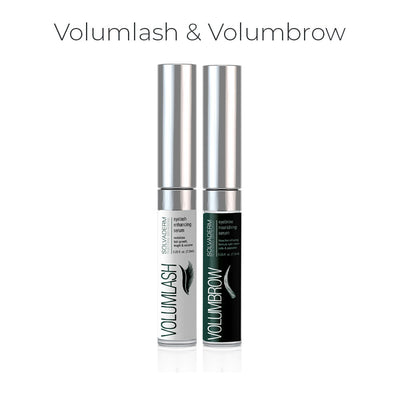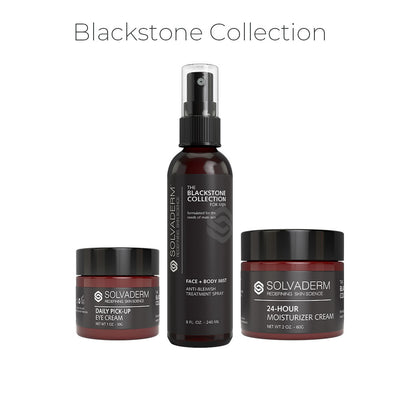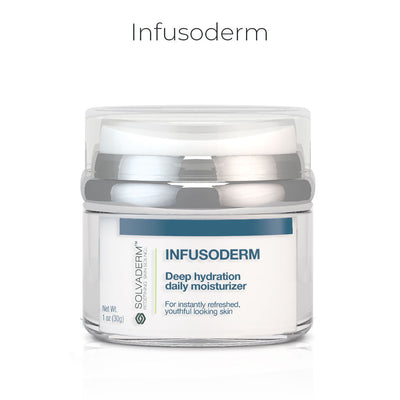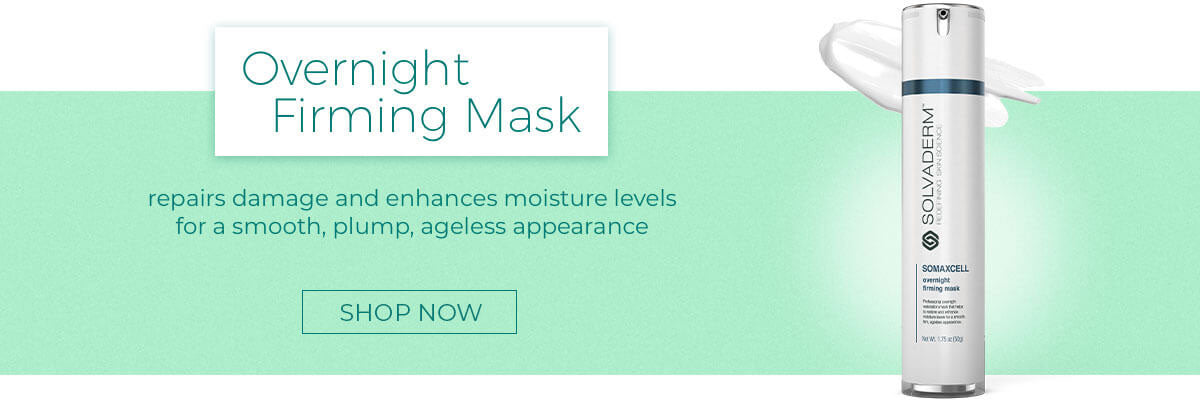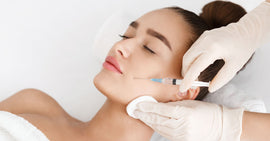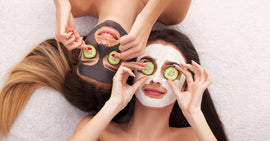Overview
Face masks have become popular, and it’s all thanks to their amazing benefits. The secret to healthy and radiant skin lies in adding a face mask to your skincare routine. However, not every facial mask is equally beneficial for everyone. To maximize the benefits of face masks, it’s necessary to choose them wisely. In this post, you’re going to learn how to choose the best face mask for your needs.
What are face masks?
Face masks are skincare products applied to the face for various purposes, such as purification, hydration, and rejuvenation. They often contain fruit extracts, vitamins, minerals, and other active compounds to nourish skin, control oil production, or remove dead skin cells.
Although incredibly popular nowadays, face masks have been around since ancient times. For example, clay masks and dead sea mud face masks were used in ancient Egypt. Masks composed of various herbs, flowers, and roots were used in ancient India. In the 19th century, Madam Rowley invented a face mask[1] made of Indian gum. This mask was created to fit like a glove and promised to bleach and brighten the complexion. The invention of this mask is considered the origin of commercially available facial masks. Face masks have become even more popular with time and are available in different forms.
How to choose the right face mask for your skin type
The most important factor in choosing the right face mask is your skin type. Always opt for facial masks that address the specific needs of your skin. Here are a few examples:
-
Hydrating: people with dry skin can benefit from hydrating face masks the most whether in creamy or sheet form. These masks contain ingredients that penetrate your skin to provide nourishment and lock in the moisture. If your skin is very dry, you can leave the mask on overnight for maximum hydration.
-
Clay and mud-based: primarily beneficial for people with oily or combination skin. The main property of these masks is to absorb excess oils and prevent acne. Clay and mud-based masks exhibit exfoliating effects, too. They can remove dead skin cells. The buildup of dead skin cells can trap oil and contribute to acne formation[2].
-
Enzyme: people with acne-prone skin may particularly benefit from enzyme cream or gel and bubble masks. These masks soothe the skin and are very gentle. Even if your skin is sensitive, you can use them to manage your acne.
-
Gel: their soothing properties are ideal for people with sensitive skin. Gel masks contain ingredients that decrease redness and inflammation.
-
Antioxidant: people with hyperpigmented skin types can benefit from antioxidant creams or gel masks. Plus, these masks can slow down the aging process.
What prep and aftercare routines are required for a face mask?
Face masks are easy to use, but proper preparation and aftercare maximize their effects. Here’s what to do:
-
Before: cleanse your skin. Use a cleanser created specifically for your skin type. Never apply a face mask on skin that isn’t clean. That way, ingredients from the facial mask don’t penetrate the skin properly, and their effectiveness is limited. On the flip side, washing your face with a cleanser helps the skin absorb ingredients from facial masks properly thereby maximizing their efficacy.
-
After: once you rinse the mask, apply a moisturizer onto your skin while it’s still damp. Moisturizer locks in the moisture in your skin, thus keeping it nourished and smooth. For the best effects, before a moisturizer, you can apply Glowpeel Dermal Exfoliation and Skin Resurfacing Repair Serum. This serum enhances skin brightness and encourages the production of collagen.
DIY face masks
Nowadays, it’s easy to buy facial masks in drugstores or online. However, you can make them yourself. Do-it-yourself masks are just as practical and beneficial as commercially available facial masks. Below are the best face mask options for DIY lovers.
-
Apple face mask: simply applying apple slices onto the skin gives a quick hydration boost. Apples contain vitamin E, which keeps the skin soft and hydrated. Juice in the apple slices maintains the skin’s pH balance and firms up the skin. Evidence shows[3] apples exhibit antioxidant activity and may even protect your skin against sun damage. Besides using apple slices, you can also make an apple face mask by mixing 1 tablespoon of apple puree with 2 teaspoons of thick yogurt and 2 teaspoons of orange juice.
-
Green tea face mask: brew a cup of green tea and let the teabag soak for an hour, then separate 1 tablespoon of the leaves. Place green tea leaves into a bowl and combine with 1 tablespoon of baking soda and 1 tablespoon of honey to make a paste. Add a few drops of water if the mixture is too thick. Green tea face mask can moisturize the skin, treat acne, and reduce irritation and redness.
-
Avocado face mask: combine half of ripe avocado with 1 tablespoon of honey and 1 tablespoon of water to form a paste. Avocado face mask soothes the skin and provides anti-inflammatory effects.
-
Charcoal face mask: combine 2 teaspoons of water and 1 drop of essential oil (e.g., lavender), add 1 teaspoon of bentonite clay to the mixture, and allow it to absorb. Then, add 1 teaspoon of activated charcoal and ½ teaspoon of honey. Charcoal face mask draws out bacteria, toxins, and oils from your skin.
-
Honey face mask: you can make a honey face mask with various ingredients. For example, you can combine 1 teaspoon of honey with 1 teaspoon of turmeric, and a little lemon juice. A face mask with honey moisturizes your skin and reduces signs of aging.
-
Aloe vera face mask: The options to make this mask are numerous e.g., you can combine 1 tablespoon of honey and aloe vera gel to make a paste. Aloe vera face mask soothes and moisturizes skin, reduces infection and acne, and combats signs of aging. Evidence confirms[4] that aloe vera stimulates fibroblasts, which produce collagen and elastin fibers.
Benefits of using a face mask
If you’ve never used a face mask before, you’re probably wondering about the benefits to expect. Whether you’re using a peel-off face mask, clay, mud, gel, cream, or something else, the benefits are numerous. Specific benefits depend on the type of face mask you’re using and its ingredients. The most important benefits of face masks include:
-
Skin hydration: face masks contain ingredients that hydrate and nourish your skin. For example, some face masks contain hyaluronic acid, which is known for its moisturizing benefits[5].
-
Firmer skin: face masks such as Somaxcell Overnight Firming Mask penetrate deep into skin layers to deliver anti-aging effects. These masks reduce inflammation and give you a plump, firm appearance.
-
Acne treatment: certain face masks, such as clay masks, can help manage acne[6] and oily skin. They draw out impurities and control oil production, thus addressing common problems that people with oily skin have.
-
Thorough cleansing: some face masks contain exfoliating ingredients that remove dead skin cells and other impurities from your skin. That way, they prevent clogging of the pores and give you a brighter complexion.
-
Shrinking pores: dead skin cells, excess oil, and other impurities make pores appear large. By removing these impurities, face masks shrink pores. The effects are even better with Glow + Refine Bundle, as you get all the benefits of a face mask and nourishment from serum and moisturizer.
-
Improved elasticity: face masks often contain ingredients that encourage the production of collagen and elastin fiber thereby improving the elasticity of your skin. This slows down the appearance of fine lines and wrinkles.
Frequently asked questions
Which type of face mask is best for the skin?
The best type of face mask depends on your skin type. Different skin types have different needs. For example, clay and mud masks are ideal for oily skin, whereas dry skin benefits more from hydrating and gel masks. The best face mask is the one that is particularly formulated for your skin type.
Do face masks help skin?
Yes, face masks do help your skin. The exact effects and benefits depend on the type of face mask you use. For example, clay masks are best for managing oily skin and acne. Korean face mask keeps your skin hydrated and shrinks the pores and peel-off masks unclog your pores, help with blackheads, hydrate your skin, and improve skin texture.
Can I mask my face every day?
While you can apply some sheet masks every day, not all of them are suitable for everyday use. For instance, glycolic acid-containing sheet masks are too strong for daily use and may irritate your skin. You should use face masks once or twice a week. However, hydrating masks can be used more often, but it’s crucial to see how your skin reacts and adapt the frequency of facial mask use accordingly.
How to apply a face mask?
The first thing you need to do is remove makeup if you’re wearing any. Proceed to wash your face with a cleanser; always apply a face mask to the clean skin. Apply the mask in a thin, even layer around the entire face or put it on a sheet, depending on the type of face mask you’re using. Later, rinse off the mask or take off the sheet. Apply a moisturizer, and you’re done.
How long does it take to use a face mask?
Facial masks come with instructions you should follow. In most cases, you need to keep them on your face for 10 to 30 minutes. That’s also a reasonable duration for homemade face masks.
Conclusion
Finding the best face mask isn’t that difficult when you choose the products based on your skin type. Consider the unique needs of your skin before choosing a face mask. Always apply facial masks to clean skin and use a moisturizer afterward. Take care of your skin, and make sure to follow your skincare routine religiously.
References
1] ↑ https://www.nykaa.com/beauty-blog/the-fascinating-history-of-face-masks-from-around-the-world/
2] ↑ https://www.ncbi.nlm.nih.gov/books/NBK279211/
3] ↑ https://www.ncbi.nlm.nih.gov/pmc/articles/PMC8911861/
4] ↑ https://www.ncbi.nlm.nih.gov/pmc/articles/PMC2763764/
5] ↑ https://www.ncbi.nlm.nih.gov/pmc/articles/PMC8322246/
4] ↑ https://www.ncbi.nlm.nih.gov/pmc/articles/PMC10626287/


